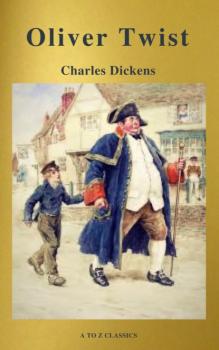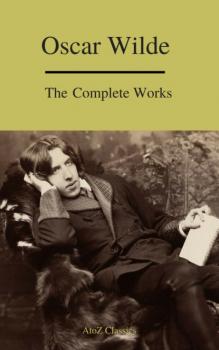Bookwire
Все книги издательства BookwireThe Invisible Man
The Invisible Man (1897) blends comedy and tragedy in its story of a scientist who discovers a way to make himself invisible. His inability to reverse the process leads to a radical disconnection from society—and eventually from his own sanity. Arriving in a town where no one knows him, disguised in bandages and dark glasses, the invisible man is driven to violent and criminal extremes before his secret is revealed. This prescient parable of the dark side of scientific progress demonstrates H. G. Wells's signature gift for dramatizing humanity's grandest possibilities and darkest fears.
Little Women
Meg is the eldest and on the brink of love. Then there's tomboy Jo who longs to be a writer. Sweet-natured Beth always puts others first, and finally there's Amy, the youngest and most precocious. Together they are the March sisters. Even though money is short, times are tough and their father is away at war, their infectious sense of fun sweeps everyone up in their adventures – including Laurie, the boy next door. And through sisterly squabbles, their happy times and sad ones too, the sisters discover that growing up is sometimes very hard to do. Based on Louisa May Alcott's childhood, this lively portrait of nineteenth-century family life possesses a lasting vitality that has endeared it to generations of readers.
A wonderful story… As a child, I strongly identified with Jo because she is a writer. —Jacqueline Wilson The American female myth. —Madelon Bedell It is an essential American novel, perhaps the essential American novel for girls… Girls come to it on their own. —Jane Smiley In «Little Women», Alcott anticipated realism by twenty or thirty years. —G. K. Chesterton
The Call of the Wild
Buck, a sturdy crossbreed canine (half St. Bernard, half Shepard), is a dog born to luxury and raised in a sheltered Californian home. But then he is kidnapped and sold to be a sled dog in the harsh and frozen Yukon Territory. Passed from master to master, Buck embarks on an extraordinary journey, proving his unbreakable spirit… First published in 1903, The Call of the Wild is regarded as Jack London's masterpiece. Based on London's experiences as a gold prospector in the Canadian wilderness and his ideas about nature and the struggle for existence, The Call of the Wild is a tale about unbreakable spirit and the fight for survival in the frozen Alaskan Klondike.
No other popular writer of his time did any better writing than you will find in «The Call of the Wild». —H. L. Mencken. Few men have more convincingly examined the connection between the creative powers of the individual writer and the unconscious drive to breed and to survive, found in the natural world… London is in and committed to his creations to a degree very nearly unparalleled in the composition of fiction. —James Dickey
Emma
Emma is a comic novel by Jane Austen, first published in December 1815, about the perils of misconstrued romance. The main character, Emma Woodhouse, is described in the opening paragraph as «handsome, clever, and rich» but is also rather spoiled. Prior to starting the novel, Austen wrote, «I am going to take a heroine whom no-one but myself will much like.»
Little Women
Meg is the eldest and on the brink of love. Then there's tomboy Jo who longs to be a writer. Sweet-natured Beth always puts others first, and finally there's Amy, the youngest and most precocious. Together they are the March sisters. Even though money is short, times are tough and their father is away at war, their infectious sense of fun sweeps everyone up in their adventures – including Laurie, the boy next door. And through sisterly squabbles, their happy times and sad ones too, the sisters discover that growing up is sometimes very hard to do. Based on Louisa May Alcott's childhood, this lively portrait of nineteenth-century family life possesses a lasting vitality that has endeared it to generations of readers.
A wonderful story… As a child, I strongly identified with Jo because she is a writer. —Jacqueline Wilson The American female myth. —Madelon Bedell It is an essential American novel, perhaps the essential American novel for girls… Girls come to it on their own. —Jane Smiley In «Little Women», Alcott anticipated realism by twenty or thirty years. —G. K. Chesterton
The Call of the Wild
The Call of the Wild is a novel by American writer Jack London. The plot concerns a previously domesticated and even somewhat pampered dog named Buck, whose primordial instincts return after a series of events finds him serving as a sled dog in the treacherous, frigid Yukon during the days of the 19th century Klondike Gold Rushes. Published in 1903, The Call of the Wild is one of London's most-read books, and it is generally considered one of his best. Because the protagonist is a dog, it is sometimes classified as a juvenile novel, suitable for children, but it is dark in tone and contains numerous scenes of cruelty and violence. London followed the book in 1906 with White Fang, a companion novel with many similar plot elements and themes as The Call of the Wild, although following a mirror image plot in which a wild wolf becomes civilized by a mining expert from San Francisco named Weedon Scott.
Aristotle: The Complete Works
This ebook contains Aristotle's complete works.
This edition has been professionally formatted and contains several tables of contents. The first table of contents (at the very beginning of the ebook) lists the titles of all novels included in this volume. By clicking on one of those titles you will be redirected to the beginning of that work, where you'll find a new TOC that lists all the chapters and sub-chapters of that specific work.
Charles Dickens : The Complete Novels (Best Navigation, Active TOC) (A to Z Classics)
With A to Z Classics, discover or rediscover all the classics of literature.
Contains Active Table of Contents (HTML)
The first table of contents (at the very beginning of the ebook) lists the titles of all novels included in this volume. By clicking on one of those titles you will be redirected to the beginning of that work, where you'll find a new TOC that lists all the chapters and sub-chapters of that specific work.
This book contains the complete novels of Charles Dickens in the chronological order of their original publication. The Pickwick Papers Oliver Twist Nicholas Nickleby The Old Curiosity Shop . Barnaby Rudge Martin Chuzzlewit Dombey and Son David Copperfield Bleak House Hard Times Little Dorrit A Tale of Two Cities Great Expectations Our Mutual Friend The Mystery of Edwin Drood
The Complete Fiction of H.P. Lovecraft ( A to Z Classics )
This collection contains an active table of contents (HTML), which makes reading easier to make it more enjoyable.
The Stories included are:
–The Nameless City –The Festival –The Colour Out of Space –The Call of Cthulhu –The Dunwich Horror –The Whisperer in Darkness –The Dreams in the Witch House –The Haunter of the Dark –The Shadow Over Innsmouth –Discarded Draft of «The Shadow Over Innsmouth» –The Shadow Out of Time –At the Mountains of Madness –The Case of Charles Dexter Ward –Azathoth –Beyond the Wall of Sleep –Celephaïs –Cool Air –Dagon –Ex Oblivione –Facts Concerning the Late Arthur Jermyn and His Family –From Beyond –He –Herbert West-Reanimator –Hypnos –In the Vault –Memory –Nyarlathotep –Pickman's Model –The Book –The Cats of Ulthar –The Descendant –The Doom That Came to Sarnath –The Dream-Quest of Unknown Kadath –The Evil Clergyman –The Horror at Red Hook –The Hound –The Lurking Fear –The Moon-Bog –The Music of Erich Zann –The Other Gods –The Outsider –The Picture in the House –The Quest of Iranon –The Rats in the Walls –The Shunned House –The Silver Key –The Statement of Randolph Carter –The Strange High House in the Mist –The Street –The Temple –The Terrible Old Man –The Thing on the Doorstep –The Tomb –The Transition of Juan Romero –The Tree –The Unnamable –The White Ship –What the Moon Brings –Polaris –The Very Old Folk –Ibid –Old Bugs –Sweet Ermengarde, or, The Heart of a Country Girl –A Reminiscence of Dr. Samuel Johnson –The History of the Necronomicon
Complete Works Of Oscar Wilde (Best Navigation) (A to Z Classics)
This ebook contains all of Oscar Wilde's plays (including the fragments), his only novel, his fairy tales and short stories, the poems, all of his essays, lectures, reviews, and other newspaper articles, based on the 1909 edition of his works.
For easier navigation, there are tables of contents for each section and one for the whole volume. At the end of each text there are links bringing you back to the respective contents tables. I have also added an alphabetical index for the poems and a combined one for all the essays, lectures, articles, and reviews.
Contents:
THE PLAYS. Vera or the Nihilists, The Duchess of Padua, Lady Windermere's Fan, A Woman of No Importance, An Ideal Husband, The Importance of Being Earnest, Salomé (the French original and Bosie's translation, and the fragments of La Sainte Courtisane and A Florentine Tragedy.
THE NOVEL. The Picture of Dorian Gray.
THE STORIES. All the stories and tales from The Happy Prince and Other Tales, Lord Arthur Savile's Crime and Other Stories (incl. The Portrait of Mr. W.H.), and A House of Pomegranates.
THE POEMS. The Collected Poems of O.W.
THE ESSAYS etc. The four essays from 'Intentions', The Soul of Man under Socialism, De Profundis (the unabridged version!), The Rise of Historical Criticism, the lectures (The English Renaissance in Art, House Decoration, Art and the Handicraftsman, Lecture to Art Students)









